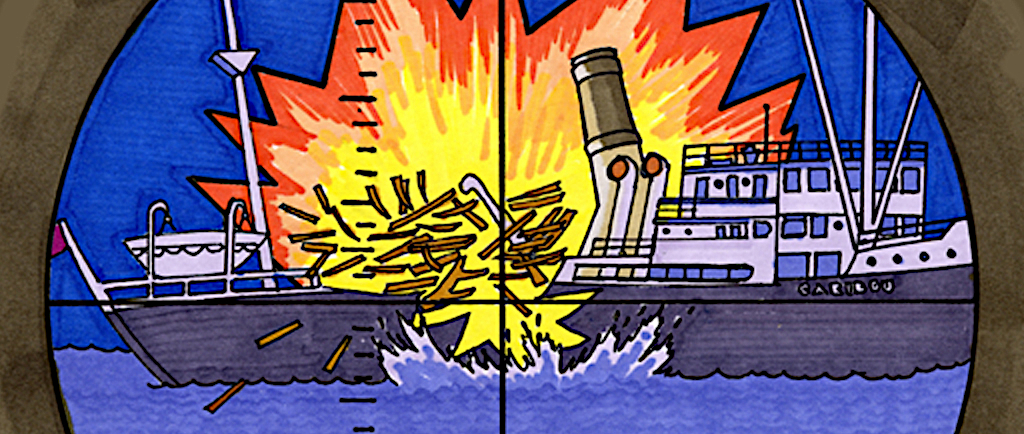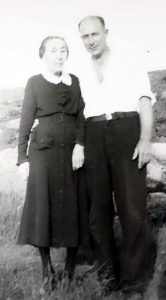The last six minutes of S.S. “Caribou”
Fireman Freeman Skeard woke at 3:30 am. Dressed and fed, he stepped out—and was knocked back into the fo’c’sle by the torpedo blast. He exited again and tried unsuccessfully to free a liferaft. Barred from the lifeboats by hot steam, he saw water flooding the cargo hatch. “I secured my life-preserver, jumped over the side and swam away.”
“The ship rolled over to port and all the ceiling and wiring came down in the wireless room. The ship rolled over and settled back” Purser Thomas Fleming recalled. On the foredeck, cold water was at his knees. “As she was going down she was steaming ahead just the same. Her engines were still working.”
When Airman Bob Johns left his cabin, he saw women and children literally crawling up the stairs from the lower deck.
Assistant Steward William Currie heard screeching women and babies, but “the forward part of the ship was settling fast and the bridge and smoke stack appeared to be enveloped in smoke and steam.”
On deck less than six minutes after the explosion, Airman Lorne Cameron sank with the ship, “I guess I was hoping it would not go down.”
At 3:58 am: William Metcalfe watched S.S. Caribou break in half, “the two ends canted up into the air before she slid under.” When the ship’s boilers exploded underwater, a wave swamped his lifeboat, dumping him into the Atlantic.



